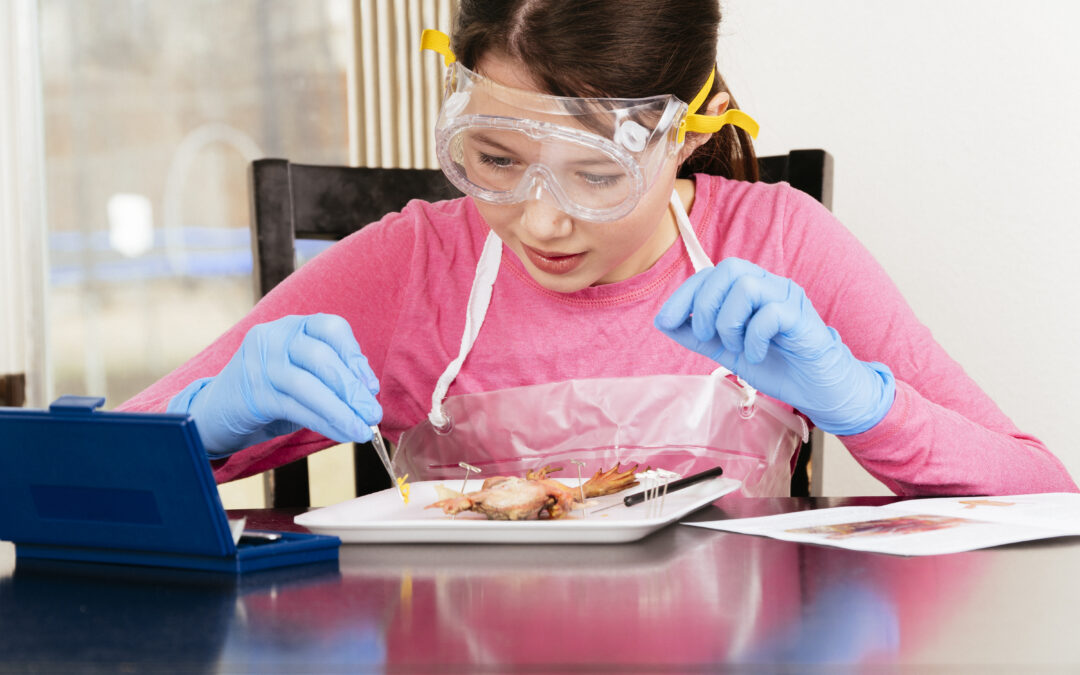Home Science Experiments for Preschoolers
Home science experiments for preschoolers are a great way to pique your child’s curiosity, teach them valuable knowledge, and allow them to have some fun in the comfort of their own home. There are plenty of activities your kiddo can do in our STEM science kits for kids that won’t even require special materials or complicated tools–just items you’d normally find in your closet or pantry!
Here are three home science experiments you can do with your little ones:
Magic Milk
The Magic Milk experiment is a great way to introduce the concept of chemical reactions. It’s easy to set up, too; you only need milk, food coloring, dishwashing liquid, and a plate.
Pour the milk into the plate, covering the entire base. Then, slowly add a few drops of food coloring in different hues to the plate, keeping space between them. This doubles as an opportunity to talk about colors–you can point out if any of them mix to make new ones.
Once you fill the pool of milk with drops of color, drop a bit of dishwashing liquid in the middle of the milk and watch as the colors begin to spread away from the soap and begin mixing with the other food coloring.
The soap reacts to the fat in the milk, forming ‘micelles’ (which is how detergent lifts grease off of dirty dishes). When these micelles are formed, the food coloring gets set in motion.
The colors will slowly continue to swirl as is, but for a bit more fun, you can give your child a toothpick and have them poke around the milk to encourage the movements. The Magic Milk experiment is also an easy science fair project for kids if you have a slightly older child who needs a school project!
Rising and Sinking Water
Warm air rises and cold air sinks. To help your preschooler learn about this concept, prepare a cup of tap water and drop some blue food coloring into it. Place the water in an ice tray or put it in the fridge to chill. Make sure it becomes colder than room-temperature water!
Once your cold water is ready, prepare a separate cup of warm water, either heating it on a stovetop or in a microwave. Add red food coloring to this one.
Prepare a large container and fill it with room-temperature water. Add the blue ice cubes or cold water to one side and the red warm water to the other. Watch as the blue water sinks to the bottom while the red water floats on top!
Walking Water
‘Capillary action’ might be a complicated term for preschoolers, but it’s a process that happens around us. It describes how liquid moves through or along the surface of another material despite other forces like gravity.
You can exhibit capillary action through the Walking Water experiment. Prepare a piece of absorbent paper towel. Cut just a thin section of it and draw colors on each end of the paper towel in rectangular blocks, making sure to go over them a few times to add plenty of dye.
Pour water into two glasses until they’re about three-quarters full, then place the two ends of the paper towels into the cups. Only submerge half of the color blocks into the water. Watch as the colors travel up the paper towel!
Explore Home Science Kits for Preschoolers
For more elaborate yet still equally fun home science experiments, explore Home Science Tools’ home science kits. We have the materials you need for fun and insightful science activities you can do with your preschooler and help them experience the excitement of science!





